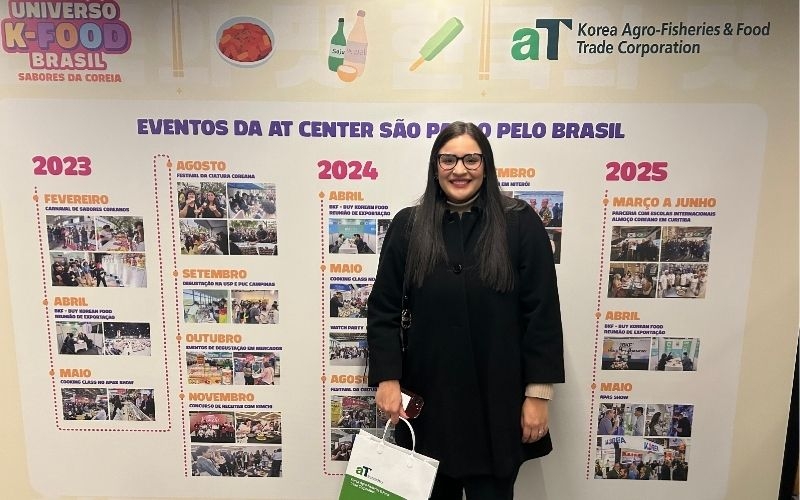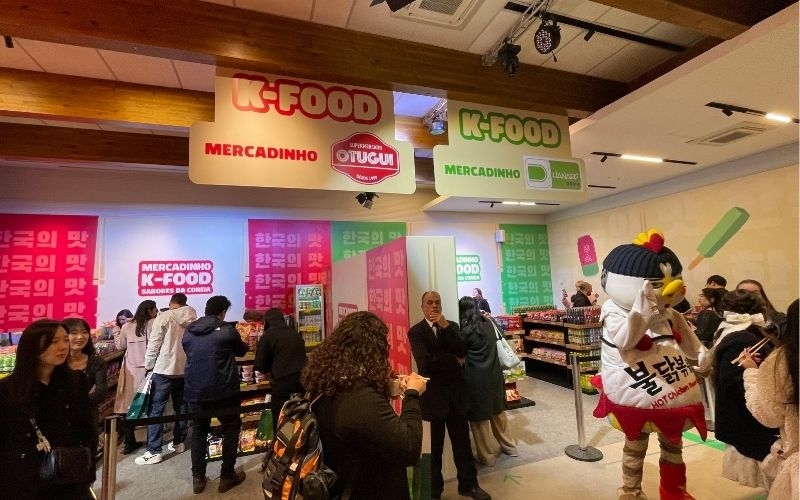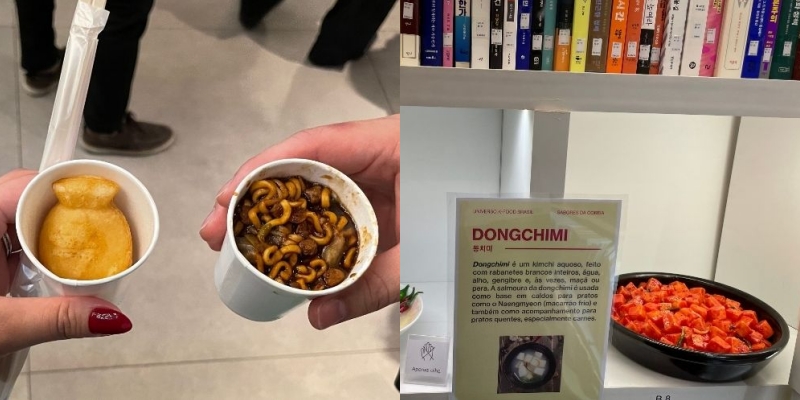- 한국어
- English
- 日本語
- 中文
- العربية
- Español
- Français
- Deutsch
- Pусский
- Tiếng Việt
- Indonesian
By Honorary Reporter Samantha Pinto do Nascimento Rosado from Brazil
Photos = Samantha Pinto
The Korean Cultural Center (KCC) in Sao Paulo, Brazil, through Aug. 1 is hosting an event on Korean cuisine and its culture. Designed to introduce Korean food culture to the Brazilian public, the event is organized in a variety of ways so that visitors can experience and learn about various Korean food products.
On July 4, I attended the preliminary pop-up event "Universe K-Food Brazil" the day before the expo's launch. This sneak peek of the attractions included activities, tastings, and interactive spaces showing the stories and cultural value behind Hansik (traditional cuisine).

A preview event for the exhibition "Universe K-Food Brazil" is held on July 4 at the KCC in Sao Paulo, Brazil.
The event was a sensory and immersive experience that combines gastronomy, traditional culture and interactivity for the Brazilian public highlighting the flavors, ingredients and symbols of Hansik.
The space was divided into the game zone, tasting zone, convenience store and B2B (business to business) area featuring highly popular items like the traditional alcoholic beverage soju, ramyeon (instant noodles) and snacks. A selection of healthy products was also available like kombucha, juices and tofu crackers.

The event "Universe K-Food Brazil" runs through Aug. 1 at the KCC in Sao Paolo, Brazil.
The game zone had activities related to Korean cuisine. One that I found interesting was a challenge in which participants tested their skills by picking up grains using chopsticks in a timed competition.
The tasting zone offered samples of Korean foods not yet available on the Brazilian market like biscuits made from potatoes and rice, pear juice, makgeolli (milkl rice wine), and mushroom-shaped cookies with chocolate and vanilla flavors.

The event offered an array of Korean food like appetizers (left) and dongchimi (water radish kimchi).
The traditional paste zone displayed Korea's famous sauces gochujang (spicy red pepper paste), doenjang, a fermented soybean paste famous for its use in a stew bearing its name, and ssamjang, a thick and spicy sauce made with soybean paste often used as a dip for grilled meat.
I left the event with new flavors in my memory, fun photos and the certainty that Korean culture keeps winning hearts here, one dish at a time.
msjeon22@korea.kr
*This article is written by a Korea.net Honorary Reporter. Our group of Honorary Reporters are from all around the world, and they share with Korea.net their love and passion for all things Korean
Most popular
- Songs from 'KPop Demon Hunters' dominate global Billboard charts
- Council sets minimum hourly wage in 2026 at KRW 10,320
- 28th annual Boryeong Mud Festival to offer more night events
- Songs from animated K-pop film rule Spotify daily chart in US
- Buddhist sutra, rare painting set returned from Japan unveiled
